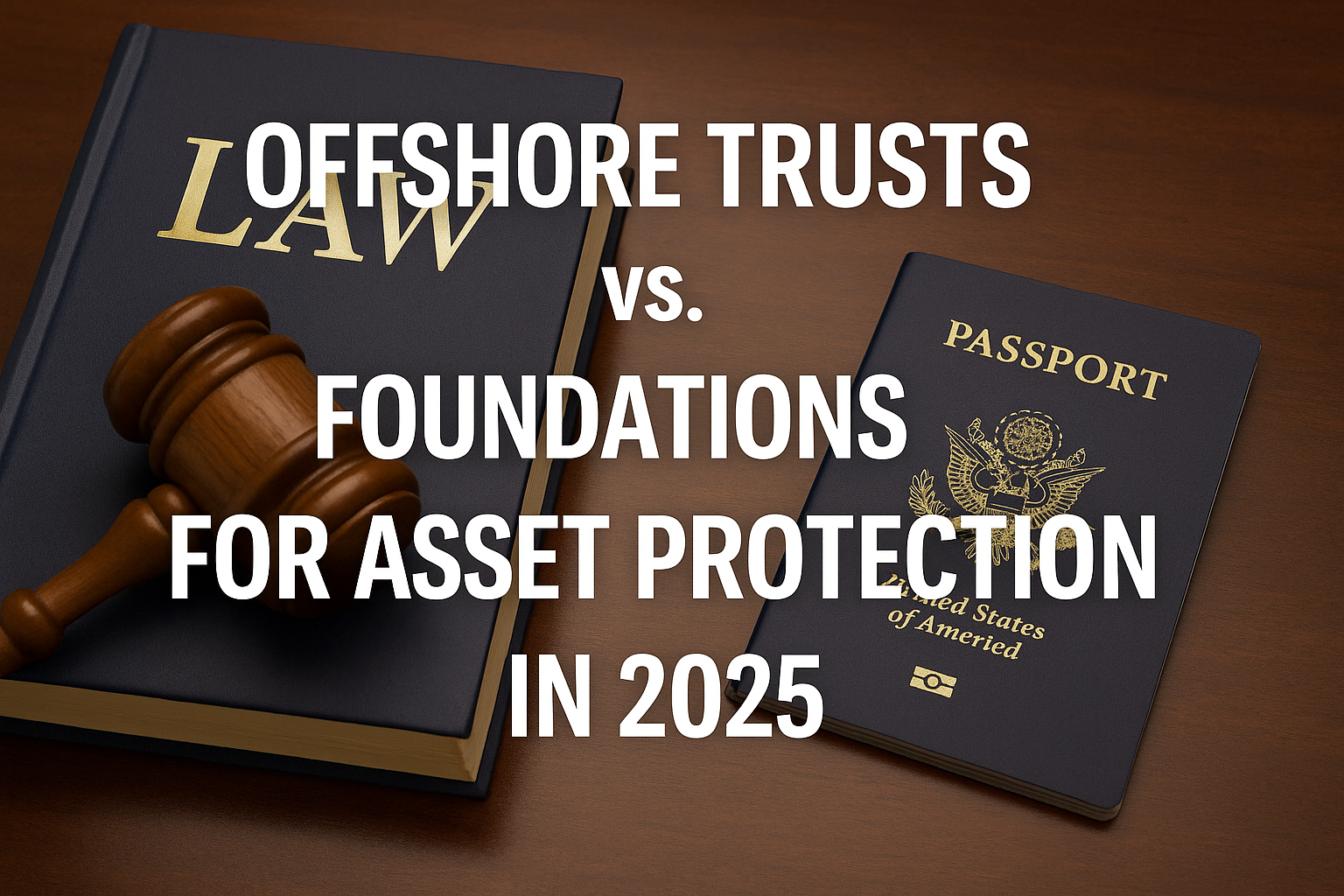Myth-busting offshore structures
The term “offshore” conjures images of secrecy and tax dodging, yet properly structured trusts and foundations are first and foremost asset-protection vehicles. They create a legal firewall that creditors, ex-spouses, and political risk find nearly impossible to breach—while maintaining regulatory compliance when set up under the right jurisdictions.
What an offshore trust really is
An offshore trust transfers legal ownership of assets from an individual (settlor) to a trustee who must follow a deed of wishes for the benefit of named beneficiaries. The key advantages are irrevocability, spendthrift clauses that block creditor claims, and dynastic succession without probate. Top 2025 jurisdictions—Cayman Islands, Bermuda, and the newly overhauled Cook Islands—now offer virtual-trust deeds signed via digital notary, accelerating setup to under a week.
How a private foundation differs
Civil-law jurisdictions prefer foundations: separate legal persons that hold assets outright, governed by a charter and by-laws rather than a trust deed. Liechtenstein, Panama, and Curaçao foundations grant founder control via “Protector Councils,” making them attractive when the settlor wants operational influence after transfer. Foundations often avoid forced-heirship rules in continental Europe, adding an estate-planning edge.
Control versus anonymity
Trusts excel at cloaking beneficiary identities through tiered nominee arrangements; foundations shine when a founder needs signing authority—e.g., running an operating company under the foundation umbrella. Hybrid strategies layer a Cook Islands trust as shareholder of a Liechtenstein foundation, balancing anonymity with directive power.
Tax residency traps to avoid in 2025
OECD’s Pillar Two and revised Common Reporting Standard force trusts with central management in high-tax countries to disclose full financials. Mitigation is straightforward: appoint a non-resident professional trustee, avoid domestic “mind and management,” and ensure board meetings occur in the offshore jurisdiction, evidenced by airline boarding passes and meeting minutes stamped locally.
Jurisdiction scorecard for 2025
| Destination | Core Strength | Renewal Fee | Fraudulent Conveyance Look-back | Notable 2025 Update |
|---|---|---|---|---|
| Cook Islands | Creditor shield, 0 % tax | US $650 | Two years | Added e-signature statute |
| Cayman Islands | Institutional banking hub | US $700 | Six years | Removed public registry requirement |
| Bermuda | Political stability | US $1 250 | Six years | Digital-asset trust legislation |
| Liechtenstein | Foundation flexibility | CHF 1 200 | Five years | Faster blockchain registration |
| Panama | Low-cost foundation | US $400 | Three years | Economic Substance rules clarified |
Red-flag clauses lawyers love to delete
- Retained powers that allow the settlor to revoke the trust—courts interpret this as sham control.
- Automatic resettlement if tax law changes: creates uncertainty; opt for a protector with migration authority instead.
- Choice of law override inside the deed but not in the letter of wishes, leading to conflict. Align both documents.
Cost and timeline
A simple asset-holding trust with bank investment account runs US $18 000 all-in for year one, including drafting, local trustee, and KYC. Foundations average US $8 000. Adding an LLC as underlying company raises annual running fees by US $2 000 but streamlines brokerage account opening, which refuses trusts/foundations directly.
Crypto and tokenised assets
Cook Islands and Bermuda enacted statutes recognizing tokenised trust units, letting trustees hold NFTs and stable-coin baskets without triggering “custody of client crypto” regulations. This sidesteps exchange-collapse risk, locking digital value behind statutory asset-protection barriers.
Checklist for choosing between a trust and a foundation
- Evaluate whether anonymity or operational control ranks higher.
- Confirm your citizenship’s “controlled foreign entity” rules; some penalise foundations more heavily than trusts.
- Model exit-tax exposure—moving appreciated stock into a structure can crystallize capital gains.
- Stress-test fraudulent conveyance timelines; don’t fund the structure within two years of a potential lawsuit.
- Pre-arrange multi-currency banking; stricter 2025 AML checks delay onboarding by sixty days if done last-minute.
Maintaining compliance without eroding protection
Annual filings are minimal: a solvency certificate, a trustee affidavit of independence, and economic-substance declaration where applicable. Public registers remain either closed (Cayman) or redacted (Liechtenstein). The golden rule: communicate only through your trustee; never sign invoices or resolutions that pierce the veil.
A future-proof estate engine
By combining an offshore trust or foundation with an irrevocable life-insurance contract, you create a self-funding estate that grows tax-deferred and distributes free of probate. Layered correctly, heirs receive policy proceeds inside the structure, remaining judgment-proof across generations—a dynastic strategy impossible with domestic wills alone.
Bringing it home: implementation timeline
- Week 1: Collect KYC—passport, utility bill, professional reference.
- Week 2: Draft deed or charter; review by a cross-border tax attorney.
- Week 3: Execute documents via digital notary; wire initial corpus and settle setup invoice.
- Week 4: Open brokerage or bank account; deposit diversified assets.
- Quarterly: Email trustee with transaction summary; store minutes in a secure cloud vault.
Conclusion
Offshore trusts and foundations remain unparalleled shields against litigation, political risk, and forced-heirship, provided they are built well before trouble brews. For high-net-worth expatriates and digital nomads with mobile wealth streams, these tools convert legal complexity into a fortress of long-term security. Knowing when to choose each, and maintaining squeaky-clean compliance, is the cornerstone of mastering global smart money in 2025 and beyond.
